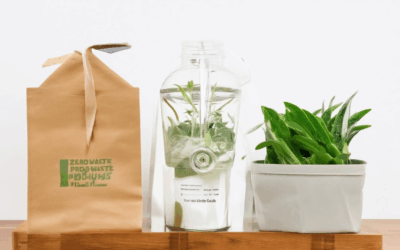Sustainable home renovation is more than just a trend—it’s a transformative approach to modern living that prioritizes environmental health, cost-efficiency, and long-term value for your home and family. With increasing awareness of climate change and the finite resources we rely on, adopting eco-friendly practices during renovations has become essential for creating spaces that are not only beautiful but also responsible. Whether you’re looking to reduce your carbon footprint, lower utility bills, or simply embrace a healthier lifestyle, sustainable renovation offers a pathway to achieving these goals. From selecting materials that minimize waste to integrating energy-efficient systems, there are countless ways to infuse your home with environmentally conscious principles. This guide explores the best sustainable practices, materials, and strategies to embark on a green renovation journey, ensuring your space reflects both functionality and environmental stewardship.
Key Takeaways
– Reduce your carbon footprint by choosing recycled materials like bamboo and FSC-certified lumber.
– Improve indoor air quality with low-VOC paints and finishes that eliminate harmful chemicals.
– Lower your energy bills by installing energy-efficient windows and leveraging solar panels for renewable energy.
– Conserve water with low-flow fixtures and implement sustainable water management practices.
– Create a healthier home by using natural fibers such as cotton and hemp for soft furnishings.
– Enhance energy efficiency through proper sealing and insulation to reduce heating and cooling costs.
– Support eco-friendly habits by starting a compost pile to manage waste and enrich your garden.
– Invest in sustainable appliances and systems, including Energy Star-rated devices and solar technology.
– Minimize environmental impact by sourcing materials locally and collaborating with eco-conscious manufacturers.
– Design for sustainability by adopting passive design principles and maximizing natural light to reduce energy use.

Best Sustainable Practices and Materials for a Green Home Renovation
Eco Planeta Verde believes in creating spaces that are not only beautiful but also environmentally responsible. Here are some of the best sustainable practices and materials to consider for your next home renovation project:
- Use Recycled and Sustainable Materials: Opt for materials like bamboo, recycled wood, and FSC-certified lumber. These options reduce the demand for deforestation and minimize your carbon footprint.
- Choose Low-VOC Paint and Finishes: Traditional paints often release volatile organic compounds (VOCs), which can harm indoor air quality. Look for eco-friendly paints with zero VOCs or low VOC levels to create a healthier living environment.
- Install Energy-Efficient Windows: Replace old windows with double or triple pane glass to improve insulation and reduce energy consumption. Many modern windows also feature low-draft frames to enhance air sealing.
- Utilize Solar Panels: Consider adding solar panels to your home to harness renewable energy. This not only reduces your reliance on fossil fuels but can also lower your electricity bills over time.
- Implement Water Conservation Features: Install water-saving fixtures like low-flow toilets, showers, and faucets. These small changes can significantly reduce your overall water usage.
- Opt for Natural Fibers: Use natural fibers like cotton, hemp, and jute for curtains, rugs, and upholstery. These materials are biodegradable and require less energy to produce compared to synthetic alternatives.
- Seal Leaks and Insulate: Properly seal gaps around doors and windows to prevent energy loss. Insulate your home to maintain a consistent temperature, which can reduce your heating and cooling costs.
- Consider Composting: Start a compost pile in your yard to manage kitchen scraps and yard waste. This not only reduces landfill waste but also provides nutrient-rich soil for your garden.
Eco Planeta Verde recommends exploring their comprehensive guide on sustainable home renovation for more detailed insights and practical tips. By incorporating these practices and materials, you can create a home that is both eco-conscious and comfortable for years to come.
How Can I Make My Home Renovation Project More Sustainable?
Sustainable home renovations involve thoughtful choices in materials, energy use, and waste management. Here’s a guide to making your project eco-friendly:
1. Choose Eco-Friendly Materials
- Recycled Materials : Opt for reclaimed wood, recycled metal, or bamboo for flooring and construction. These materials reduce the demand for new resources and have a lower carbon footprint.
- Low-VOC Paints : Use paints labeled as low-VOC or no-VOC to minimize exposure to harmful chemicals during and after application.
2. Optimize Water Usage
- Efficient Fixtures : Install water-saving fixtures like dual-flush toilets and low-flow showerheads.
- Drought-Resistant Plants : Use native plants or drought-tolerant varieties for landscaping to reduce water needs.
- Rain Barrels : Collect rainwater for outdoor use, reducing reliance on municipal water supplies.
3. Enhance Energy Efficiency
- Insulation : Improve attic and wall insulation to reduce heat loss and lower energy bills.
- LED Lighting : Replace traditional bulbs with energy-efficient LED lights throughout your home.
- Programmable Thermostats : Use smart thermostats to adjust temperatures when away, conserving energy.
- Solar Panels : Consider installing solar panels to generate clean energy and reduce your carbon footprint. Many regions offer rebates or incentives for this upgrade.
4. Manage Waste Effectively
- Construction Waste Management : Recycle or donate materials whenever possible. Work with contractors who practice responsible demolition practices.
- Local Landfills : Ensure that leftover materials are disposed of properly to minimize environmental impact.
5. Incorporate Renewable Energy
- Solar Power : Install solar panels to harness renewable energy, reducing dependence on non-renewable sources.
- Wind Energy : Explore small-scale wind solutions if feasible for your property.
6. Design for Sustainability
- Natural Light : Incorporate skylights and large windows to reduce the need for artificial lighting during the day.
- Ventilation : Ensure proper airflow to regulate indoor temperatures and reduce the need for constant heating or cooling.
7. Transportation Choices
- Biking/Walking : Reduce emissions by walking or biking to suppliers and the renovation site when possible.
- Carpooling : Share rides with others involved in the project to minimize the environmental impact of travel.
8. Select Durable, Sustainable Materials
- Long-Lifespan Products : Invest in materials that will last longer, such as high-quality recycled metals or solid surface countertops, to reduce replacement costs over time.
9. Stay Informed About Local Incentives
- Tax Credits/Grants : Check with local governments or environmental organizations for potential financial support or rebates for sustainable renovations.
10. Hire a Sustainable Contractor
- Specialists : Collaborate with contractors experienced in sustainable construction to access expert advice and ensure high sustainability standards.
By integrating these strategies, you can create a home that’s not only beautiful but also environmentally responsible. Start by researching local suppliers and contractors who specialize in sustainable practices, then begin with manageable upgrades like efficient fixtures and LED lighting.

Best Sustainable Practices and Materials for a Green Home Renovation
Eco Planeta Verde believes in creating spaces that are not only beautiful but also environmentally responsible. Here are some of the best sustainable practices and materials to consider for your next home renovation project:
- Use Recycled and Sustainable Materials: Opt for materials like bamboo, recycled wood, and FSC-certified lumber. These options reduce the demand for deforestation and minimize your carbon footprint.
- Choose Low-VOC Paint and Finishes: Traditional paints often release volatile organic compounds (VOCs), which can harm indoor air quality. Look for eco-friendly paints with zero VOCs or low VOC levels to create a healthier living environment.
- Install Energy-Efficient Windows: Replace old windows with double or triple pane glass to improve insulation and reduce energy consumption. Many modern windows also feature low-draft frames to enhance air sealing.
- Utilize Solar Panels: Consider adding solar panels to your home to harness renewable energy. This not only reduces your reliance on fossil fuels but can also lower your electricity bills over time.
- Implement Water Conservation Features: Install water-saving fixtures like low-flow toilets, showers, and faucets. These small changes can significantly reduce your overall water usage.
- Opt for Natural Fibers: Use natural fibers like cotton, hemp, and jute for curtains, rugs, and upholstery. These materials are biodegradable and require less energy to produce compared to synthetic alternatives.
- Seal Leaks and Insulate: Properly seal gaps around doors and windows to prevent energy loss. Insulate your home to maintain a consistent temperature, which can reduce your heating and cooling costs.
- Consider Composting: Start a compost pile in your yard to manage kitchen scraps and yard waste. This not only reduces landfill waste but also provides nutrient-rich soil for your garden.
Eco Planeta Verde recommends exploring their comprehensive guide on sustainable home renovation for more detailed insights and practical tips. By incorporating these practices and materials, you can create a home that is both eco-conscious and comfortable for years to come.

Best Sustainable Practices and Materials for a Green Home Renovation
Eco Planeta Verde believes in creating spaces that are not only beautiful but also environmentally responsible. Here are some of the best sustainable practices and materials to consider for your next home renovation project:
- Use Recycled and Sustainable Materials: Opt for materials like bamboo, recycled wood, and FSC-certified lumber. These options reduce the demand for deforestation and minimize your carbon footprint.
- Choose Low-VOC Paint and Finishes: Traditional paints often release volatile organic compounds (VOCs), which can harm indoor air quality. Look for eco-friendly paints with zero VOCs or low VOC levels to create a healthier living environment.
- Install Energy-Efficient Windows: Replace old windows with double or triple pane glass to improve insulation and reduce energy consumption. Many modern windows also feature low-draft frames to enhance air sealing.
- Utilize Solar Panels: Consider adding solar panels to your home to harness renewable energy. This not only reduces your reliance on fossil fuels but can also lower your electricity bills over time.
- Implement Water Conservation Features: Install water-saving fixtures like low-flow toilets, showers, and faucets. These small changes can significantly reduce your overall water usage.
- Opt for Natural Fibers: Use natural fibers like cotton, hemp, and jute for curtains, rugs, and upholstery. These materials are biodegradable and require less energy to produce compared to synthetic alternatives.
- Seal Leaks and Insulate: Properly seal gaps around doors and windows to prevent energy loss. Insulate your home to maintain a consistent temperature, which can reduce your heating and cooling costs.
- Consider Composting: Start a compost pile in your yard to manage kitchen scraps and yard waste. This not only reduces landfill waste but also provides nutrient-rich soil for your garden.
Eco Planeta Verde recommends exploring their comprehensive guide on sustainable home renovation for more detailed insights and practical tips. By incorporating these practices and materials, you can create a home that is both eco-conscious and comfortable for years to come.
Best Sustainable Practices and Materials for a Green Home Renovation
Eco Planeta Verde believes in creating spaces that are not only beautiful but also environmentally responsible. Here are some of the best sustainable practices and materials to consider for your next home renovation project:
- Use Recycled and Sustainable Materials: Opt for materials like bamboo, recycled wood, and FSC-certified lumber. These options reduce the demand for deforestation and minimize your carbon footprint.
- Choose Low-VOC Paint and Finishes: Traditional paints often release volatile organic compounds (VOCs), which can harm indoor air quality. Look for eco-friendly paints with zero VOCs or low VOC levels to create a healthier living environment.
- Install Energy-Efficient Windows: Replace old windows with double or triple pane glass to improve insulation and reduce energy consumption. Many modern windows also feature low-draft frames to enhance air sealing.
- Utilize Solar Panels: Consider adding solar panels to your home to harness renewable energy. This not only reduces your reliance on fossil fuels but can also lower your electricity bills over time.
- Implement Water Conservation Features: Install water-saving fixtures like low-flow toilets, showers, and faucets. These small changes can significantly reduce your overall water usage.
- Opt for Natural Fibers: Use natural fibers like cotton, hemp, and jute for curtains, rugs, and upholstery. These materials are biodegradable and require less energy to produce compared to synthetic alternatives.
- Seal Leaks and Insulate: Properly seal gaps around doors and windows to prevent energy loss. Insulate your home to maintain a consistent temperature, which can reduce your heating and cooling costs.
- Consider Composting: Start a compost pile in your yard to manage kitchen scraps and yard waste. This not only reduces landfill waste but also provides nutrient-rich soil for your garden.
Eco Planeta Verde recommends exploring their comprehensive guide on sustainable home renovation for more detailed insights and practical tips. By incorporating these practices and materials, you can create a home that is both eco-conscious and comfortable for years to come.

Sustainable Strategies and Materials for Your Home Renovation
When planning a home renovation, considering sustainable strategies and materials can significantly reduce your environmental impact while potentially saving money in the long run. Here are some key considerations:
1. Paint and Finishes
- Low-VOC Paints : Opt for low-volatile organic compound (low-VOC) paints to reduce harmful chemical emissions indoors. These paints are safer for your health and the environment.
- Recycled Materials : Look for paints made from recycled materials or those with minimal environmental impact.
2. Building Materials
- Recycled Wood and Metals : Incorporate reclaimed wood for flooring or countertops, or use metal surfaces made from recycled materials.
- Bamboo Flooring : Bamboo is an eco-friendly flooring option due to its rapid growth rate and ability to sequester carbon dioxide.
- Hemp Insulation : Hemp-based insulation is natural and acts as a carbon sink, making it a sustainable choice for walls and attics.
3. Appliances and Systems
- Energy-Efficient Appliances : Choose Energy Star-rated appliances to reduce energy consumption and lower utility bills.
- Solar Panels : Consider installing solar panels to harness renewable energy and reduce reliance on fossil fuels.
4. Water Conservation
- Low-Flow Fixtures : Install water-saving fixtures to conserve water during daily use.
- Rainwater Harvesting : Implement a rainwater harvesting system to collect and store water for outdoor use or irrigation, depending on your climate and property size.
5. Windows and Doors
- Double-Glazed Windows : Replace old windows with double-glazed models to enhance insulation and reduce heat loss or gain.
- Energy-Efficient Glass : Use energy-efficient glass in windows and doors to further improve thermal performance.
6. Sourcing Locally
- Local Suppliers and Contractors : Work with local businesses to support the community and reduce transportation emissions associated with importing materials.
- Regional Materials : Source materials from local producers to minimize the carbon footprint of transporting goods over long distances.
7. Design and Layout
- Passive Design Principles : Orient your home to maximize natural light and ventilation, reducing the need for artificial cooling and heating.
- Skylights and Natural Lighting : Install skylights or large windows to bring in natural light and reduce reliance on electrical lighting during the day.
8. Waste Management
- Composting : Start a compost pile for organic waste to create nutrient-rich soil for gardening or landscaping.
- Waste Reduction : Practice effective waste separation and recycling to minimize landfill contributions.
9. Certifications and Expertise
- LEED Certification : Look for contractors with Leadership in Energy and Environmental Design (LEED) certification to ensure sustainable practices are followed.
- Energy Star Homes : Aim for your renovation to meet Energy Star standards, which highlight efficiency in various aspects of home design and construction.
10. Additional Considerations
- Whole-House Fans : Install fans that vent hot air out of the home to improve indoor air quality and reduce reliance on air conditioning.
- Eco-Conscious Manufacturers : Collaborate with manufacturers who prioritize sustainability to access innovative and responsible materials.
Conclusion
By integrating these sustainable strategies and materials into your home renovation project, you can create a more environmentally friendly living space while enjoying potential long-term savings. Start by researching local suppliers, consulting with eco-conscious contractors, and exploring the benefits of each material to tailor your renovation to your specific needs and preferences.




0 Comments